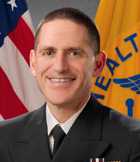CDC Vital Signs: HIV and Injection Drug Use
November 29, 2016 – Use of Syringe Services Programs Increases, but Access Must Improve for Greater HIV Prevention
Use of syringe services programs has increased substantially during the last decade, but most people who inject drugs are still not using sterile needles consistently, according to a new CDC Vital Signs report. The report also highlights some successes in HIV prevention among African Americans who inject drugs and Latinos who inject drugs and worrying trends in whites who inject drugs.
Resources
- Press Release: Use of syringe services programs increases, but access must improve for greater HIV prevention
- MMWR: Vital Signs: Trends in HIV diagnoses, risk behaviors, and prevention among persons who inject drugs—United States
- Vital Signs: HIV and Injection Drug Use
-
Background Materials
- Syringe Services Programs
- CDC Program Guidance for Implementing Certain Components of Syringe Services Programs, 2016 [340 KB]
- Department of Health and Human Services Implementation Guidance to Support Certain Components of Syringe Services Programs, 2016 [976 KB]
- CDC Statement on Syringe Services Programs
Spokespersons
Tom Frieden, M.D., MPH

“The prescription opioid and heroin epidemics are devastating families and communities throughout the nation, and the potential for new HIV outbreaks is of growing concern. Our goal is for people to live long enough to stop substance use and not contract HIV or other serious infections while injecting – SSPs can help people accomplish both.” – Tom Frieden, M.D., MPH, director of the Centers for Disease Control and Prevention
Jonathan Mermin, M.D.

“Life for people who inject drugs can be hard. Avoiding HIV and hepatitis shouldn’t be.” – Jonathan Mermin, M.D., director of CDC’s National Center for HIV/AIDS, Viral Hepatitis, STD, and TB Prevention
Eugene McCray, M.D.

“CDC is working closely with our state and local partners to help bring syringe services programs to communities that need them. Comprehensive SSPs save lives – in the short term, by treating overdoses, and in the longer term by preventing HIV infection and helping people to stop using drugs.” – Eugene McCray, M.D., director of CDC’s Division of HIV/AIDS Prevention
- Page last reviewed: November 29, 2016
- Page last updated: November 29, 2016
- Content source:


 ShareCompartir
ShareCompartir

